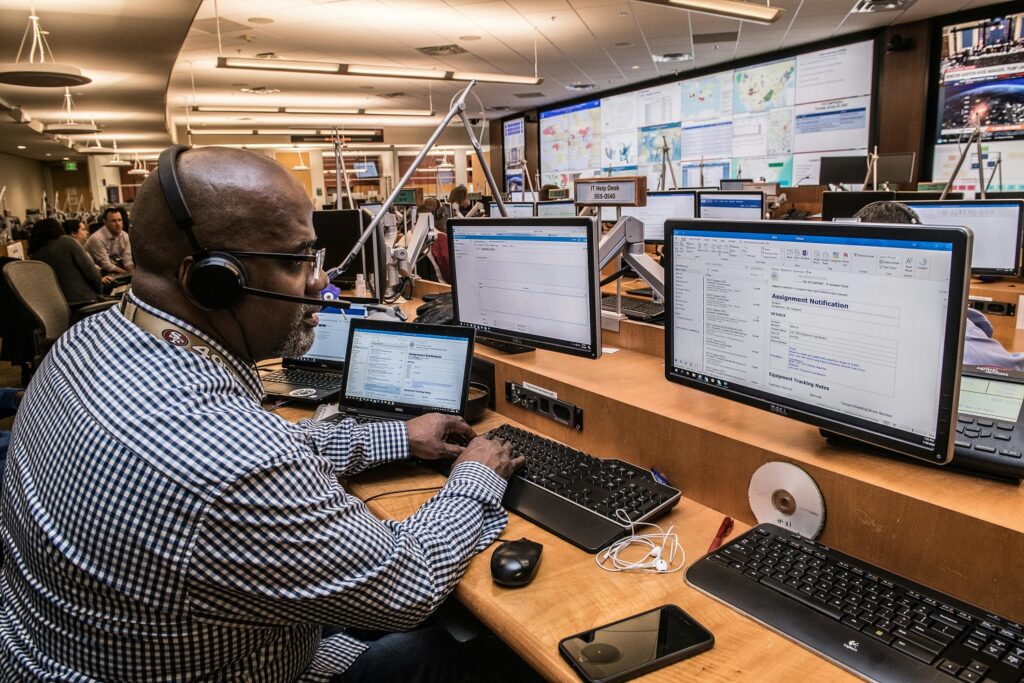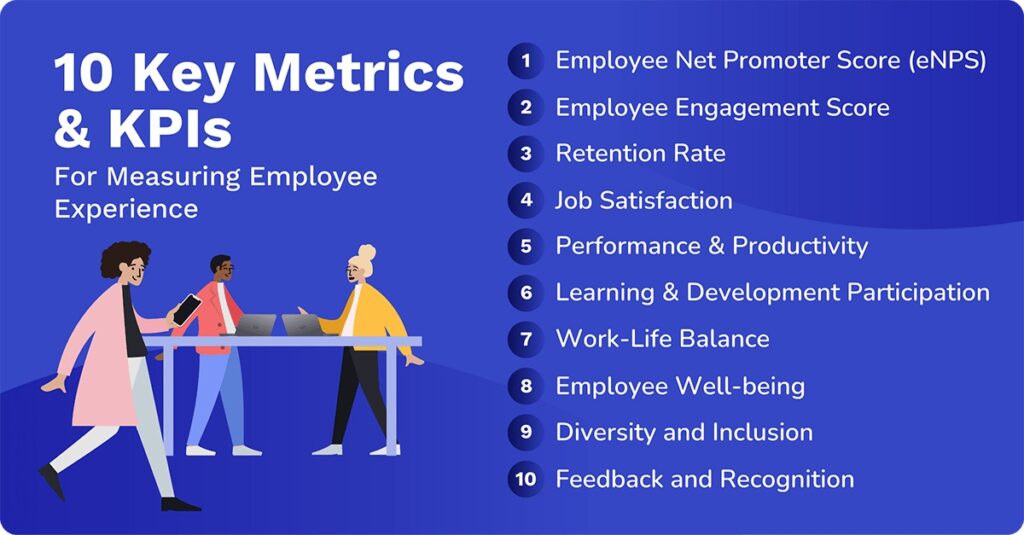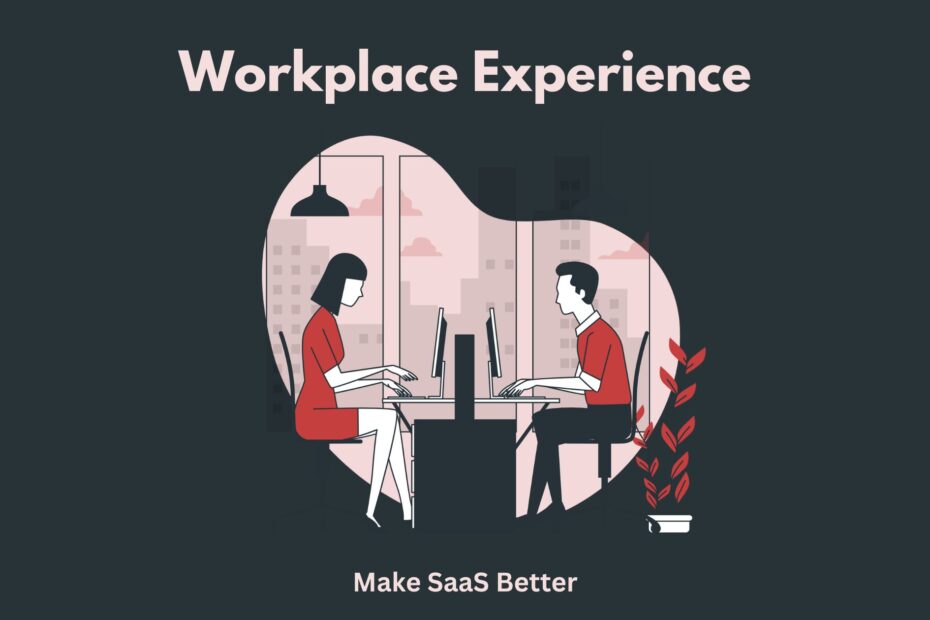“Employee experience is the sum of all employee interactions with an organization – everything from pre-hire to retirement. It is the intentional design of a compelling experience for employees in work while employee engagement is an outcome of this workplace experience.” – Ben Whitter
Creating a positive workplace experience has become a priority for organizations aiming to attract and retain top talent. But what exactly is workplace experience?
It’s more than just the physical office space or the perks offered.
It’s a holistic approach that encompasses every interaction an employee has with the company, from the recruitment process to day-to-day tasks, and ultimately to their departure.
Organizations offering a well-crafted workplace experience are more likely to have higher employee engagement, better productivity, and overall satisfaction.
In this guide, you’ll learn about how space, people, and technology play critical roles in maintaining a healthy workplace environment and 6 strategies to improve WX further.
Let’s dive in!
What is Workplace Experience?
Workplace experience (WX) is all about how employees feel about their work environment, including the physical space, technology, culture, and interactions. It’s a human-centered approach to the workplace that aims to help employees do their best work.
WX is shaped by a number of factors, including:
- Office Design: Functional and appealing workspaces.
- Tools and Technology: Efficient hardware and software.
- Company Culture: Shared values and ethics.
- Management Practices: Supportive and engaging leadership.
- Employee Interactions: Positive colleague relationships.
It determines how happy, productive, and fulfilled employees feel in their place of work. A positive workplace experience can lead to higher employee engagement, productivity, and retention.
Why is Workplace Experience Important?
Business leader Ian Hutchinson emphasized – “Your number one customers are your people. Look after employees first and then customers last.”
And it’s true.
Your employees can work better when they feel better and WX plays a major role in this.
You need to provide a good WX if you want your employees to visit the office in this remote and hybrid work environment, where people can comfortably work from home.
You must keep your employees motivated and satisfied. A good WX results in:
- Improved Employee Experience: In a healthy work environment. Employees feel more empowered and focused, leading to higher job satisfaction.
- Increased Employee Engagement and Productivity: A positive workplace experience keeps employees engaged and motivated. Gallup’s studies show that engagement is higher among remote and hybrid workers, especially in organizations that emphasize a positive culture.
- Enhanced Collaboration and Connection: Providing a safe and transparent workplace to foster connections among employees, whether remote or in-office, helps create stronger team bonds and better collaboration.
- Better Employee Retention: A positive workplace experience makes employees feel valued and appreciated, reducing turnover. This leads to better retention, lower recruitment and training costs, and a more experienced workforce.
The Elements of Workplace Experience
Space
One of the most obvious elements that impact employee experience is the physical environment. With employers striving to return employees to the office, the physical work environment is more important than ever.
Workplace design, layout, lighting, comfort systems, and amenities should all work together to create a comfortable, inviting environment that promotes healthy work habits and collaborative efforts.

Comfortable and attractive work environments with natural light, good furniture, and relaxing areas can make employees happier and healthier.
Flexible workspaces, such as hot desks and shared areas, also support both in-office and remote work, fitting the hybrid work model many companies use today.
Technology
The way we work has changed, and that means employers and their IT teams are paying more attention to how employees experience their physical and digital work environments.
Technology is playing a big role in making things easier for us. Things like video calls, scheduling tools, and shared digital workspaces are streamlining our work and helping us focus on what matters.

Technology is also helping us understand how to make our work environments better.
People
Employees are the heart of any organization.
How they feel about their daily roles and expectations shapes the workplace culture. Their interactions, skills, and the overall work environment significantly impact their work experience.
Hence, a positive and inclusive culture where employees feel valued and heard leads to higher engagement and job satisfaction. Strong relationships and clear communication also lead to effective teamwork and problem-solving.

A diverse workforce brings fresh ideas and perspectives, driving creativity and innovation. Inclusive practices ensure everyone feels respected, boosting morale and retention.
Moreover, organizations offering supportive leadership and a culture of empathy help maintain employees’ mental health. Providing resources for stress management, mental health days, and counseling is essential in today’s work environment.
These elements combined create a thriving workplace where employees can excel and feel supported.
How to Improve Workplace Experience?
1. Survey Employees & Gather Feedback
To improve workplace experience, you need to listen to your employees and gain a better understanding of how they feel at work.
A good start to this would be surveying employees and gathering feedback.
To help employees put their points honestly and without hesitation, use anonymous surveys, suggestion boxes, and one-on-one meetings to discuss their current experiences and expectations.
These insights will help you identify recurring issues and areas for improvement. Employee feedback provides a direct line to understanding what works well and what needs change.
Moreover, when you put in efforts to actually listen to your employees and care about how they feel, it establishes a culture of openness and trust, making them feel valued and respected.
This step lays the foundation for creating a more positive and productive workplace.
2. Create a New Workplace Experience Strategy
Now that we have an idea of where things are going wrong, it’s time to devise a proper plan for improving the workspace experience.
A well-thought-out strategy provides a roadmap for creating a supportive and engaging work environment, ultimately leading to higher employee satisfaction and productivity.
This plan should address the key concerns and suggestions raised by employees.
Focus on areas like work-life balance, office environment, communication channels, and professional development opportunities. Define clear goals and actionable steps to enhance each aspect.
You can also involve employees in the planning process so that no gaps are left and their needs are met.
3. Hire a Dedicated Workplace Experience Manager
Hiring a dedicated Employee or Workplace Experience Manager can help you prioritize WX.
By having a specific individual or team responsible for this function, you ensure consistent attention to employee needs and a structured approach to improvement.
This role goes beyond traditional HR duties, focusing exclusively on enhancing the day-to-day experiences of employees. With a dedicated manager in place, you create a dynamic and responsive environment where employee needs are met proactively.
The Workplace Experience Manager coordinates efforts across HR, and IT, to create a cohesive strategy, addressing everything from the physical workspace to benefit programs and employee communication practices.
This role also involves continuously monitoring and reporting on workplace experience metrics.
Moreover, this commitment should begin from the hiring process, ensuring recruits feel valued and integrated from day one.
4. Establish Cross Team Collaboration Between HR, IT & Facility Teams
Strong cross-team collaboration between HR, IT, and Facility teams is crucial for enhancing the workplace experience for employees.
First, it’s essential to define clear objectives and goals that align with improving employee satisfaction, streamlining processes, and enhancing workplace safety. These shared goals provide a unified direction for all teams.
Creating a collaborative culture is the next step. You can start by promoting open communication through regular meetings and employing team collaboration and productivity tools to ensure all teams are on the same page.
As a manager, business owner, or HR, it is also important to encourage mutual respect and understanding of each team’s unique contributions.
This integrated approach not only improves efficiency but also creates a more supportive and responsive workplace, ultimately leading to higher employee satisfaction and productivity.
5. Measure Workplace Experience
It’s important to regularly measure workplace experience and identify areas that need improvement.
By regularly looking at how people feel about working here, you can use the information to make smart choices that will make employees happier and help the company do well.
Along with surveys using metrics like employee satisfaction scores, retention rates, and productivity levels can provide valuable insights.
This information helps us see how any changes we’ve made are affecting things and spot any patterns over time. Also, make sure to set specific goals and KPIs for tracking the progress and plan better for the future.

6. Gather Feedback Again & Reassess
Improving workplace experience is an ongoing process. After implementing changes, gather feedback again to evaluate their effectiveness.
Use the same methods as the initial survey to maintain consistency. Assess whether employees feel the improvements have addressed their concerns and if new issues have arisen.
Then, update the plan for making work a better experience based on this feedback, and make any necessary changes. Getting feedback all the time helps make sure that the workplace changes to fit what employees need.
This creates a workplace where everyone can do well and feel supported.
As improving WX is an ongoing process, don’t get settled quickly. Instead, regularly revisiting and refining strategies shows a commitment to employee well-being and sustained workplace improvement.
Setting a Healthy Workplace Environment
Prioritizing a healthy workspace is an investment that brings substantial rewards.
To quote Richard Branson, “Take care of your employees, and they will take care of your business.”
You can achieve this by introducing wellness programs, offering flexible work arrangements, and regularly checking in with employees to understand their needs and concerns. It’s also crucial to have supportive leadership and a culture of empathy.
Remember, a favorable work environment not only attracts talented individuals but also keeps them, contributing to your organization’s long-term success.
Ultimately, what matters is providing a healthy workspace, listening to your employees, and gaining their trust.

